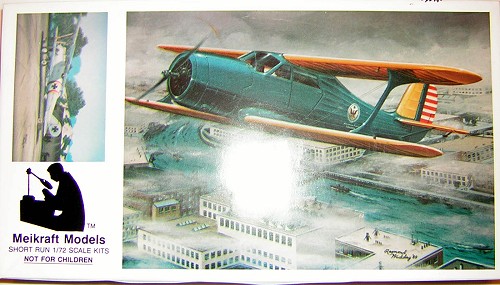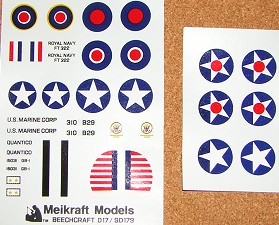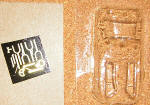
| KIT: | Meicraft 1/72 Beech 17 Staggerwing |
| KIT #: | 1804 |
| PRICE: | $15.00 in 1989 |
| DECALS: | Three options |
| REVIEWER: | Joel Hamm |
| NOTES: | Gladly OOP. Alternate kit - Sword 72010 |

| HISTORY |
Kit From Hell Preview #1
A previous preview discussed the first generation of short run kit production and Meikraft’s products. Out of sheer laziness I will excerpt from the history on the instruction sheet. “In April of 1932 Walter Beech bought back his old Travelair aircraft plant in Wichita, Kansas from Curtiss-Wright. The idea of bringing out a luxurious, high speed, long range, four passenger private aircraft during the depths of the Great Depression was a gamble, at best. ...With top speeds in the 200 mph range the Staggerwing was the Lear Jet of the 1930s and set several speed and altitude records in the hands of such great pilots as Jacqueline Cochran. …The Beech D.17s proved to be just right for use as a fast communications aircraft for the military, where it served as the UC-43 in the U.S. Army and the GB-1 and GB-2 in the U. S. Navy and marines. …Over 200 survive today. … Whichever aircraft you choose to model, it would be best to work from photographs as many Staggerwings differed in detail. …check photos of the aircraft carefully before building the kit.”
| THE KIT |
 This
looks like another rough but buildable model from Meikraft. Main airframe
parts appear generally well shaped. Engine, prop, struts, etc. would have
to be scratched or scrounged. The surface texture again is grainy and has
patches of “eczema” that look like the plastic may have stuck to the mold.
Everything appears to be sandable, because of the coarse ribbing detail,
though the scribing on the wings would have to be deepened or redone.
Fuselage halves are very thick and should be shaved down to fit an
interior. Engine cowl halves are integral with the fuselage and would
probably best be separated, thinned, m
This
looks like another rough but buildable model from Meikraft. Main airframe
parts appear generally well shaped. Engine, prop, struts, etc. would have
to be scratched or scrounged. The surface texture again is grainy and has
patches of “eczema” that look like the plastic may have stuck to the mold.
Everything appears to be sandable, because of the coarse ribbing detail,
though the scribing on the wings would have to be deepened or redone.
Fuselage halves are very thick and should be shaved down to fit an
interior. Engine cowl halves are integral with the fuselage and would
probably best be separated, thinned, m ated,
and reattached over a replacement radial.
ated,
and reattached over a replacement radial.
Affixing the lower
wing to the body looks like a job requiring lots of putty and patience.
Wings and tail planes are reasonably thin and airfoil shaped, though when
the two vertical fin halves, which are molded with the fuselage, come
together they will doubtless be too tubby. Wheel wells are just indistinct
shallow depressions’ to be drilled
 through
and Dremelled out. Transparencies are vacuformed. Side windows are
definitely candidates for replacement with rhomboids of clear styrene.
Windshield looks awfully iffy. A fret of photo etched brass parts is
provided, but they are flat where the real things are 3-D, so are useless.
The thumbnail sized exploded drawing doesn’t help any in locating the
interplane struts or assembling the landing gear; but the color and marking
guide is adequate. Decals give the impression of high quality, and I intend
to segue them to another project.
through
and Dremelled out. Transparencies are vacuformed. Side windows are
definitely candidates for replacement with rhomboids of clear styrene.
Windshield looks awfully iffy. A fret of photo etched brass parts is
provided, but they are flat where the real things are 3-D, so are useless.
The thumbnail sized exploded drawing doesn’t help any in locating the
interplane struts or assembling the landing gear; but the color and marking
guide is adequate. Decals give the impression of high quality, and I intend
to segue them to another project.
| CONCLUSIONS |
If you can locate one and are into self flagellation go ahead and try putting it together. If you just want a decent replica of the Staggerwing get either the land plane or float version put out by Sword.
January 2006
If you would like your product reviewed fairly and quickly by a site that has over 300,000 visitors a month, please contact me or see other details in the Note to Contributors.